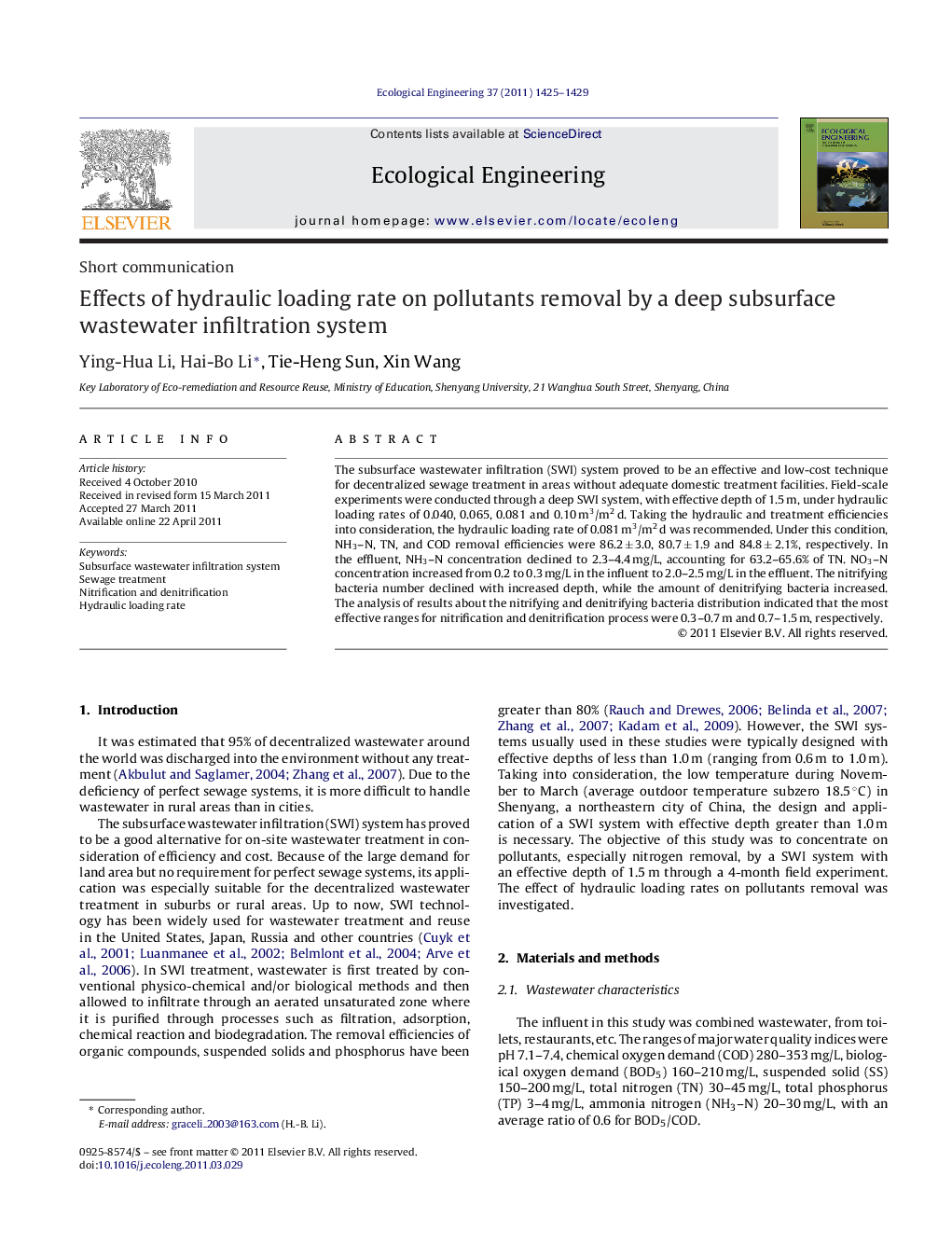| Article ID | Journal | Published Year | Pages | File Type |
|---|---|---|---|---|
| 4390257 | Ecological Engineering | 2011 | 5 Pages |
The subsurface wastewater infiltration (SWI) system proved to be an effective and low-cost technique for decentralized sewage treatment in areas without adequate domestic treatment facilities. Field-scale experiments were conducted through a deep SWI system, with effective depth of 1.5 m, under hydraulic loading rates of 0.040, 0.065, 0.081 and 0.10 m3/m2 d. Taking the hydraulic and treatment efficiencies into consideration, the hydraulic loading rate of 0.081 m3/m2 d was recommended. Under this condition, NH3–N, TN, and COD removal efficiencies were 86.2 ± 3.0, 80.7 ± 1.9 and 84.8 ± 2.1%, respectively. In the effluent, NH3–N concentration declined to 2.3–4.4 mg/L, accounting for 63.2–65.6% of TN. NO3–N concentration increased from 0.2 to 0.3 mg/L in the influent to 2.0–2.5 mg/L in the effluent. The nitrifying bacteria number declined with increased depth, while the amount of denitrifying bacteria increased. The analysis of results about the nitrifying and denitrifying bacteria distribution indicated that the most effective ranges for nitrification and denitrification process were 0.3–0.7 m and 0.7–1.5 m, respectively.
